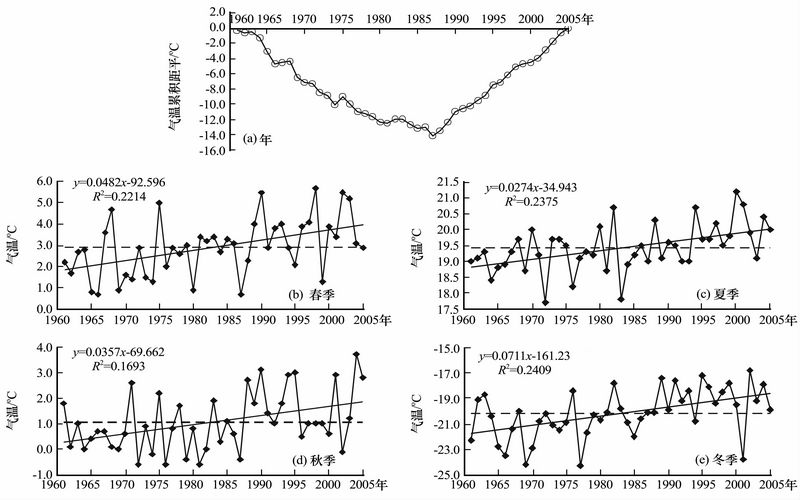Interannual Variations of the Air Temperature, Surface Temperature and Shallow Ground Temperature along the China-Russia Crude Oil Pipeline
Updatetime:2010-12-28From:
【Enlarge】【Reduce】
Based on monthly mean air and ground temperatures(0, 80, 160, 320 cm)observed in the meteorological stations from the beginning of the station up to 2005, the annual mean and seasonal mean temperatures at the stations from 1961 to 2005 are worked out through interpolation. It is found that the annual air temperature of the stations along the China-Russia crude oil pipeline displayed a good correlation. During the 40 years, annual air temperature varied significantly. The lowest annual mean air temperature occurred in the 1960s, followed by a minor increase in the 1970s, and then the annual air temperature continuously increased in the 1980s, but the temperature increasing rate slowed down in the 1990s. Surface temperature of each station also showed a good correlation, and it was the smallest in the 1970s, but increased distinctly in the 1980s. The most significant increase of air temperature occurred in winter and spring, with an increasing rate of 0.71 ℃·(10a)-1 and 0.48 ℃·(10a)-1, respectively, higher than that of annual mean air temperature. Increasing rates of annual mean air and surface temperature were 0.45 ℃·(10a)-1 and 0.27 ℃·(10a)-1, respectively. Air temperature increased faster than surface temperature. Annual mean surface temperature was higher than annual mean air temperature. Variation of underground temperature was consistent with that of air temperature, with a time lag of one to two years.
|
Variations of the seasonal mean air temperatures (b, c, d, e) and the cumulative anomaly of air (Picture/Journal of Glaciology and Geocryology) |
Appendix





